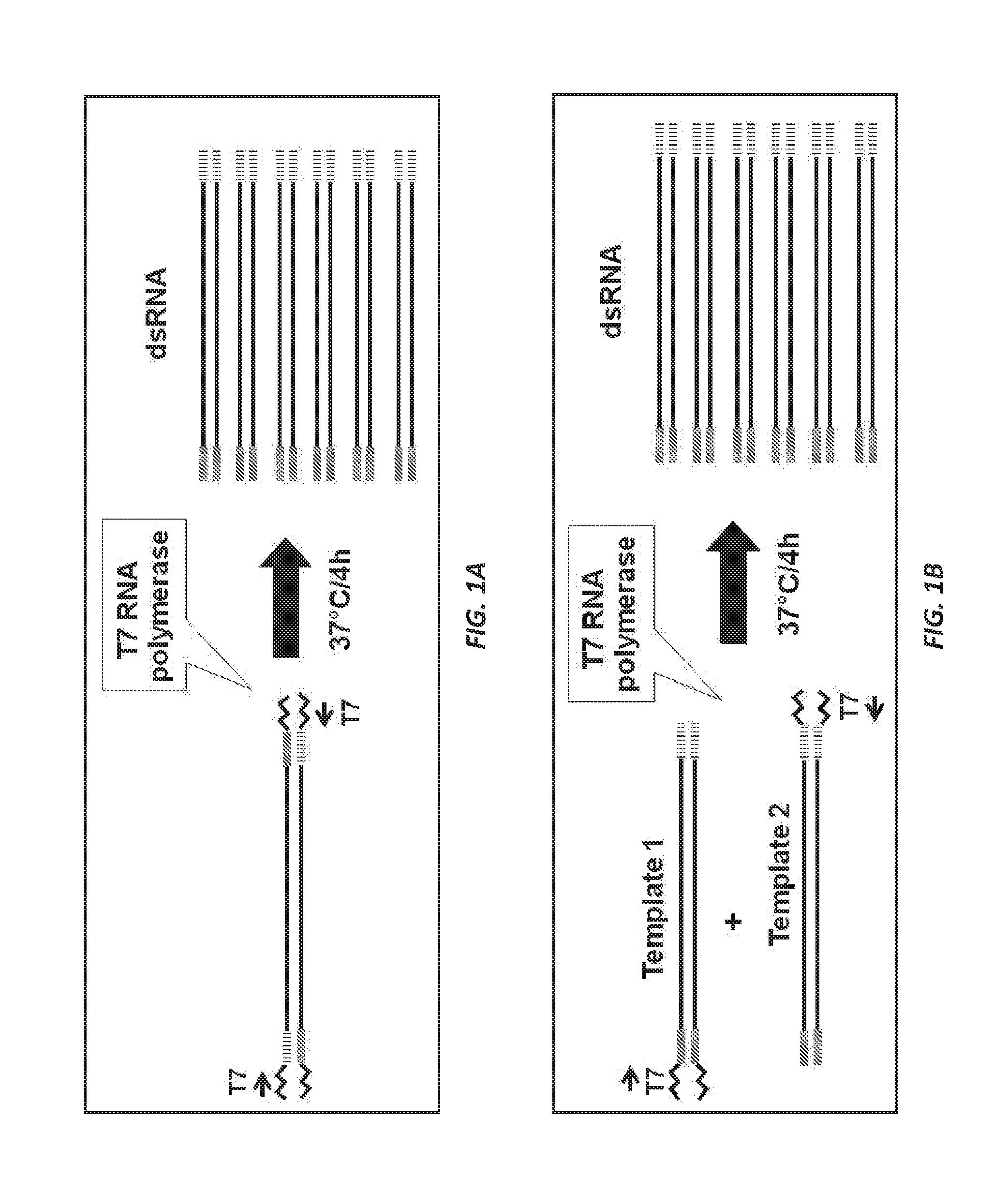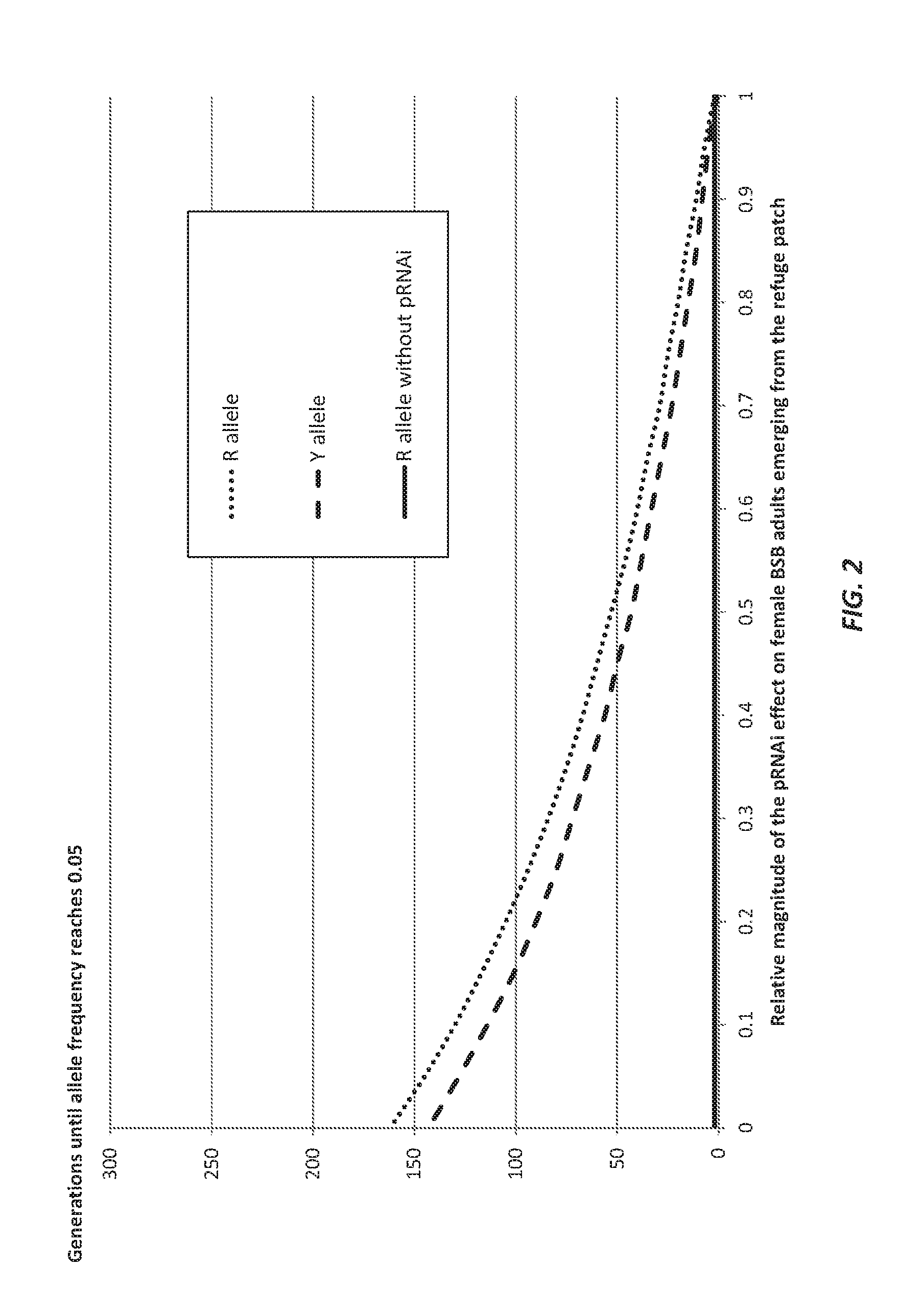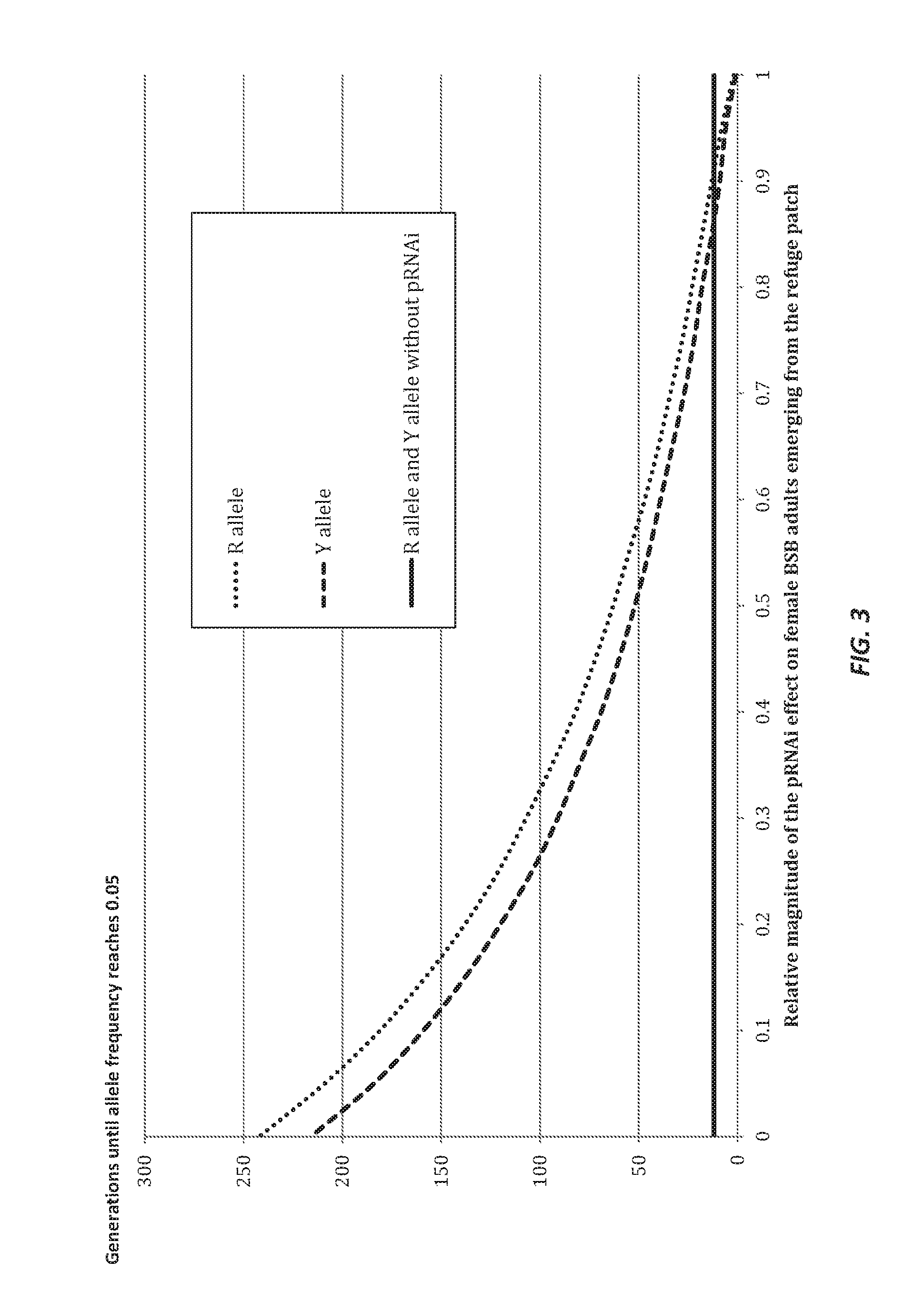Parental rnai suppression of hunchback gene to control hemipteran pests
a technology of hemipteran pests and rnai suppression, which is applied in the field of genetic control of plant damage caused by hemipteran pests, can solve the problems of reducing the number of viable progeny produced, reducing the growth and/or reproduction of hemipteran pests, etc., and achieves the effect of reducing the capacity of an existing generation and reducing the number of viable progeny
- Summary
- Abstract
- Description
- Claims
- Application Information
AI Technical Summary
Benefits of technology
Problems solved by technology
Method used
Image
Examples
example 1
RNAi Constructs
Template Preparation by PCR and dsRNA Synthesis
[0209]The strategies used to provide specific templates for hunchback dsRNA production are shown in FIG. 1A and FIG. 1B. Template DNAs intended for use in hunchback dsRNA synthesis are prepared by PCR using specific primers and first-strand cDNA prepared from total RNA. For hunchback selected target gene regions, two separate PCR amplifications are performed. FIG. 1.A The first PCR amplification introduces a T7 promoter sequence at the 5′ end of the amplified sense strands. The second reaction incorporates the T7 promoter sequence at the 5′ ends of the antisense strands. The two PCR amplified fragments for each region of the target genes are then mixed in approximately equal amounts, and the mixture is used as transcription template for dsRNA production. FIG. 1A.
[0210]For the YFP negative control, a single PCR amplification is performed. FIG. 1B. The PCR amplification introduced a T7 promoter sequence at the 5′ ends of th...
example 2
Real-Time PCR Analysis
[0211]Quantitative Real-Time PCR: E. heros tissues for qRT-PCR were collected from zero to three day-old females injected with dsRNA as described in Example 6. After seven days, female ovaries were dissected under a stereo microscope in nuclease-free 1×PBS (pH 7.4) and frozen individually on dry ice in collection microtubes. Tissue disruption was performed with the RL lysis buffer and the Klecko™ tissue pulverizer (Garcia Manufacturing, Visalia, Calif.). Following tissue maceration, the total RNA was isolated in high throughput format using the Norgen Total RNA Purification 96-well kit (Norgen BioteK Corp, Ontario, Canada) following the manufacturer's protocol using Turbo™ DNase (Life Technologies, Carlsbad, Calif.) for 1 hour at 37° C. on the elutant. cDNA synthesis was performed using the high capacity cDNA RT kit (Life technologies, Carlsbad, Calif.) according to the manufacturer's protocol with the following modifications. Total RNA was adjusted to 50 ng / μl...
example 3
Construction of Plant Transformation Vectors
[0215]An entry vector harboring a target gene construct for dsRNA hairpin formation comprising segments of hunchback (SEQ ID NO:1) is assembled using a combination of chemically synthesized fragments (DNA2.0, Menlo Park, Calif.) and standard molecular cloning methods. Intramolecular hairpin formation by RNA primary transcripts is facilitated by arranging (within a single transcription unit) two copies of a target gene segment in opposite orientation to one another, the two segments being separated by a linker sequence (e.g. ST-LS1 intron, SEQ ID NO:6; Vancanneyt et al. (1990) Mol. Gen. Genet. 220:245-250). Thus, the primary mRNA transcript contains the two hunchback gene segment sequences as large inverted repeats of one another, separated by the linker sequence. A copy of a promoter (e.g. maize ubiquitin 1, U.S. Pat. No. 5,510,474; 35S from Cauliflower Mosaic Virus (CaMV); promoters from rice actin genes; ubiquitin promoters; pEMU; MAS; m...
PUM
| Property | Measurement | Unit |
|---|---|---|
| temperature | aaaaa | aaaaa |
| pH | aaaaa | aaaaa |
| volumes | aaaaa | aaaaa |
Abstract
Description
Claims
Application Information
 Login to View More
Login to View More - R&D
- Intellectual Property
- Life Sciences
- Materials
- Tech Scout
- Unparalleled Data Quality
- Higher Quality Content
- 60% Fewer Hallucinations
Browse by: Latest US Patents, China's latest patents, Technical Efficacy Thesaurus, Application Domain, Technology Topic, Popular Technical Reports.
© 2025 PatSnap. All rights reserved.Legal|Privacy policy|Modern Slavery Act Transparency Statement|Sitemap|About US| Contact US: help@patsnap.com



